Article 6 of the Paris Agreement at COP28: What is at stake?
Developing stringent rules for the global carbon market under A6.4 could set a precedent for high standards and restore faith…
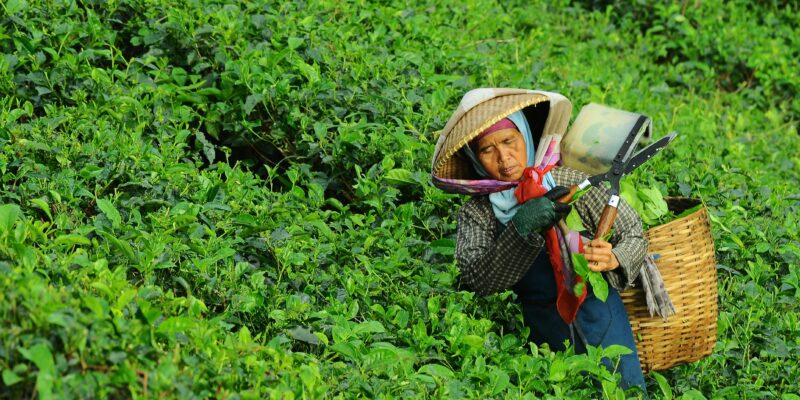
More than half of agricultural land globally is degraded, leading to productivity losses of USD 400 billion every year. Projections indicate that globally, agricultural production will need to expand by 60% by 2050 to meet increased demand, and most of this will need to come from increased productivity. Food production also makes up more than a third of greenhouse gas emissions worldwide, of which 58% is from animal-based agriculture (including livestock feed) and 29% is from the production of plant-based foods.
Smallholder farms of less than two hectares in size produce around one-third of the world’s food. Farms of up to 20 hectares produce over half (see the chart below).[1]Small-scale farmers are typically those that produce food on up to two hectares of land in Asia and Africa and up to 15 hectares in Latin America. Small-scale farmers may or may not hold land titles. These farms face various production risks due to a range of factors, including they are small in size, are held under traditional or informal land tenure, are more vulnerable to market shocks, are constrained by low soil productivity and low-quality or marginal lands, feature complex production systems hosting a diversity of plants and animals, face regulatory regimes in the Global North that have strict and ever-changing policies on food security and safety, suffer from isolation and low levels of technology, and may be subject to armed conflict and state fragility.
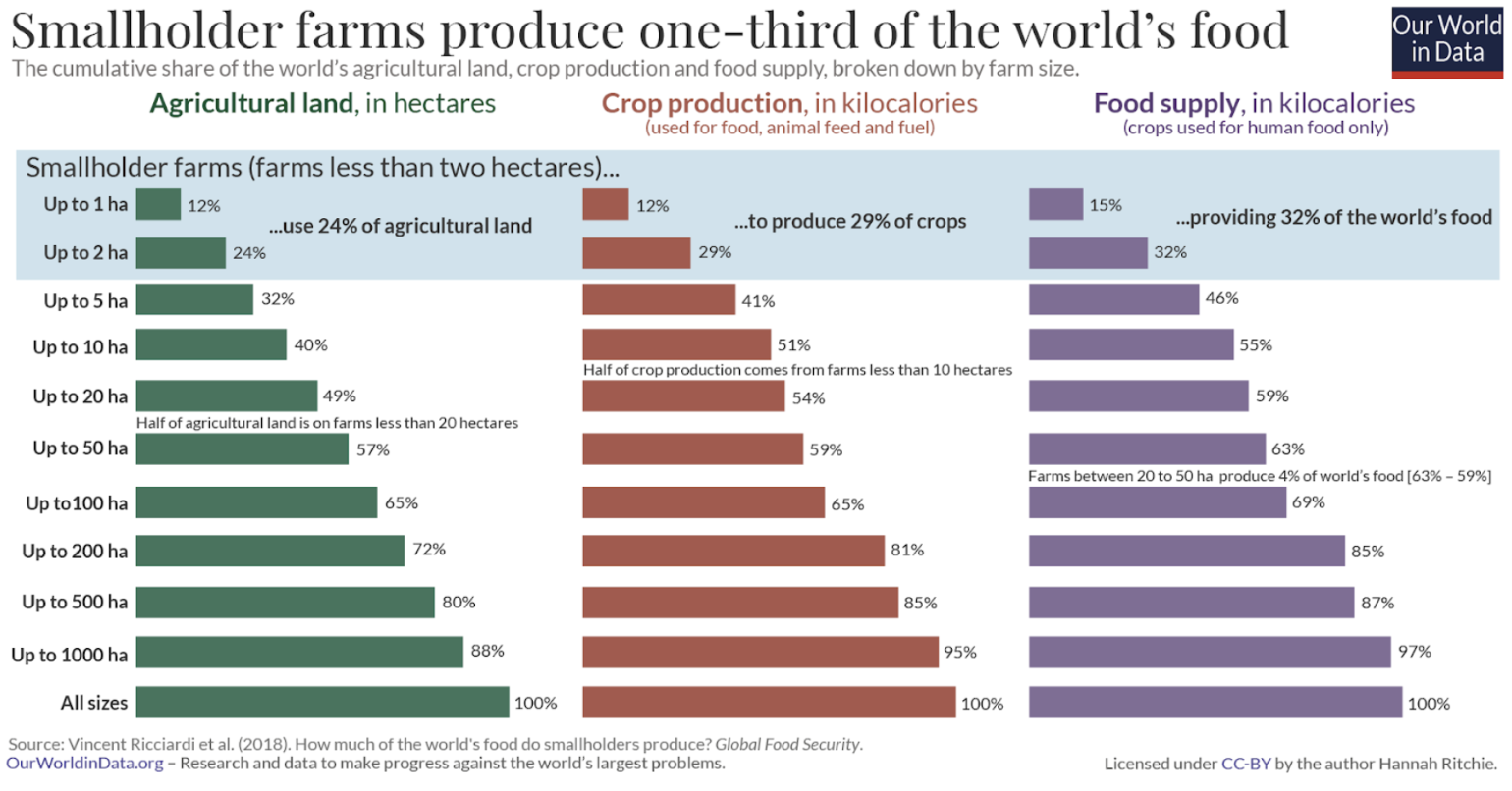
Small-scale farmers, particularly in developing countries, therefore play a crucial role in ensuring food security despite experiencing major food insecurity themselves. Smallholder farmers are disproportionately vulnerable to the effects of climate change and climate shocks, yet it is estimated that they receive only 1.7% of total climate finance. The World Economic Forum (WEF) recognises that farmers are key to addressing the current ecological and climate crises and need to be supported through the provision of financing and fair economic opportunities in order to embrace sustainable food production practices.
The Food and Agriculture Organization (FAO) describes sustainable agriculture as meeting “the needs of present and future generations, while ensuring profitability, environmental health and social and economic equity”. Various types of agricultural production can be considered sustainable, and these are discussed below.
The main aim of sustainable intensification is to increase crop and livestock yields and the associated economic activity without negatively impacting soil, water or the integrity of natural ecosystems. In general, this means a move away from the typical seed, fertiliser and pesticide technologies used in modern agriculture to restorative practices that rely more on ecological processes and internal resources. It also means increasing output on existing agricultural land and reducing the loss of natural habitat for agricultural production. Examples of how agricultural systems in both developed and developing countries may be redesigned to fit the principles of sustainable intensification are provided in the table below:

Many argue that sustainable intensification can only be achieved if public investments encourage the adoption of innovations and support farmers by making technologies accessible and affordable. As smallholder farmers are vulnerable to production risks, they need initiatives and investments that are relatively low-risk and that offer short-term returns.
For example, agroforestry, which is one of the tools that can be used in different types of sustainable agriculture and involves planting trees alongside pasture and crops, is being supported by the non-profit research institute CIFOR-ICRAF. Their Trees for Food Security II project trained smallholder farmers in Africa in agroforestry principles and business skills, allowing them to participate more effectively in timber, fruit and fodder value chains while increasing outputs and improving sustainability. Another initiative is designed to demonstrate to smallholder oil palm producers in Cameroon that the use of industrial mills is more efficient than small local mills and could improve their productivity and income. Research supported by research centre CIFOR-ICRAF has shown that pests in Zambia and Malawi that would ordinarily be controlled using pesticides can be managed through the use of low-cost agroecological farming principles.[2]Conventional pesticides are expensive for these farmers, who often do not have access to adequate protective clothing.
Sustainable intensification and climate-smart agriculture (discussed below) are closely interlinked, with sustainable intensification forming the foundation of climate-smart agriculture. Therefore, the constraints, solutions and financing options discussed below under climate-smart agriculture will be broadly applicable to sustainable intensification.
Climate-smart agriculture aims to guide agricultural systems towards supporting food security in the context of a changing climate, through “integrating climate change into the planning and implementation of sustainable agricultural strategies”. As climate change presents considerable risk in terms of unpredictable weather patterns, climate-smart agriculture focuses on building resilience in order to respond more rapidly to these risks and reduce the chances of becoming food insecure. It has three broad principles:
Climate-smart agriculture uses existing approaches focused on supporting ecosystem services for achieving these principles, with sustainable intensification being a foundation.[3]Ecosystem services are the basic services that are provided by the natural environment that offer benefits to humans, such as pollination The tools and approaches that are used will vary depending on the regional context, but some examples include:
A recent analysis of climate-smart agriculture on small-scale farms found the common barriers to be poor education, skills and knowledge; potentially high investment costs and delayed benefits; and uncertainty.
The constraints and potential solutions have been summarised in the table below:
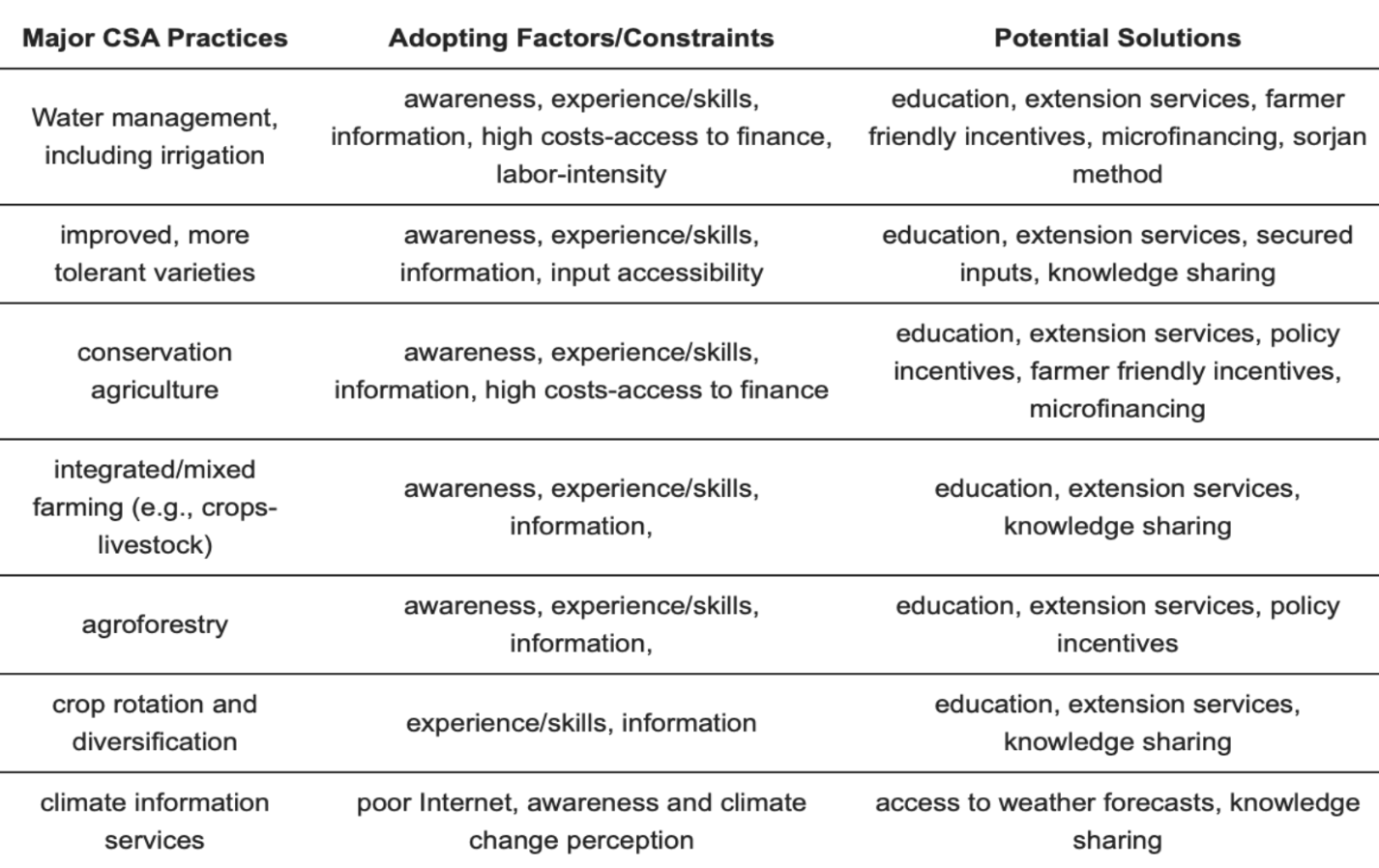
This analysis highlights that knowledge sharing and education, among other factors, are key to realising climate-smart agriculture. Solutions also need to consider that the benefits and costs of agricultural transitions differ in different social groups and contexts.
An analysis by McKinsey identified the approaches that could be taken by government, development partners and the private sector to encourage the adoption of climate-smart agricultural measures for smallholder farmers. Among other things, it recommended the following:
The World Bank Group is supporting the development of climate-smart agriculture and is committed to working with countries to increase productivity, improve resilience and reduce agricultural emissions. It has developed more than 10 Climate Smart Agriculture Investment Plans, offering financing of over USD 2.5 billion for climate-smart agriculture projects that are aligned with its objectives. Two examples include:
Various green bonds have also been developed to support climate-smart agriculture in the Global South. For instance:
The CGIAR, a global partnership linking international organisations concerned with food security, aims to improve the resilience of small-scale farmers to climate shocks through providing climate adaptation solutions through national innovation schemes. Examples include ‘climate-smart villages’, which identifies villages or regions that are likely to be badly affected by climate change and then connects community representatives and researchers to work together to identify climate-smart solutions.
The African Development Bank Group and the International Fund for Agricultural Development (IFAD) have launched the ‘Mission 1 for 200’ initiative, which aims to “double agricultural productivity through the use of state-of-the-art, climate-smart technology and advice” and “build resilience by helping food systems and farmers adapt to climate change and reducing agriculture’s environmental impact and emissions”.
The aim of organic farming is “to create integrated, humane, environmentally and economically sustainable production systems, which maximize reliance on farm-derived renewable resources and the management of ecological and biological processes and interactions, so as to provide acceptable levels of crop, livestock and human nutrition, protection from pests and disease, and an appropriate return to the human and other resources”. Increasing awareness of the negative impacts on inputs, such as pesticides, on human health and the environment has spurred public interest in organic products. It is suggested that organic agriculture has room to expand globally, and given its various sustainability benefits over conventional farming, such as improved soil and food quality, greater biodiversity, less pollution and greater social benefits, it could contribute greatly to feeding the world.
Organic farming systems can promote food security by using minimal external inputs and promoting environmentally-friendly techniques. They are characterised by the following five features:
There are various advantages of organic farming for small-scale producers, including:
Some disadvantages include:
Compared to intensively-managed agriculture, organic farming tends to improve species richness and abundance, although there may not be a major difference between organic farms and small-scale farms made up of different agricultural fields and species. Organic farming has been found to have higher soil carbon levels, better soil quality and less soil erosion than conventional farms. Organic farming, on average, has a lower climate impact than conventional farming, whether considering the carbon footprint per land unit (43% fewer greenhouse gas emissions) or the carbon footprint per product unit (12% fewer greenhouse gas emissions). However, there are some examples of where organic farming performs less well than conventional farming:

As the chart above shows, while organic farming mostly performs better in certain impacts, such as greenhouse gas emissions, it performs less well in others, such as land use. For some impacts, the effects might be mixed – for example, energy use for producing vegetables in organic farming is higher because of certain alternative pesticides that may be used. The eutrophication (enriching a body of water with minerals and nutrients) potential in organic farming is high due to differences in the nutrient release of synthetic fertilisers versus manures.
Regenerative agriculture has been broadly defined as “a system of farming principles and practices that increases biodiversity, enriches soils, improves watersheds and enhances ecosystem services”. It strongly emphasises the improvement of soil health and the restoration of degraded soils, which in turn enhances the quality of water and vegetation, improves land productivity and restores the carbon content of the soil. Another core feature of regenerative agriculture is the reversal of biodiversity loss.
A wide variety of practices may be promoted under regenerative agriculture, as summarised in the table below:

In terms of financing, in Brazil Rizoma-Agro has issued green bonds for regenerative agriculture, while Biotrop has issued green bonds worth BRL 100 million for regenerative agriculture. PepsiCo has issued a 10-year USD 1.25 billion green bond focused on investments into environmental sustainability, including regenerative agriculture.
Agroecology is “the integrative study of the ecology of the entire food system, encompassing ecological, economic and social dimensions”. It offers a framework for supporting sustainable agriculture and food systems that is focused on three aspects:
Rather than altering the practices of existing unsustainable agricultural systems, agroecology requires the complete transformation of food and agricultural systems. The way in which agroecological principles are applied will depend on the local context.
The 10 Elements of Agroecology, which is a framework that was developed by the FAO and multiple stakeholders, offers a guideline:
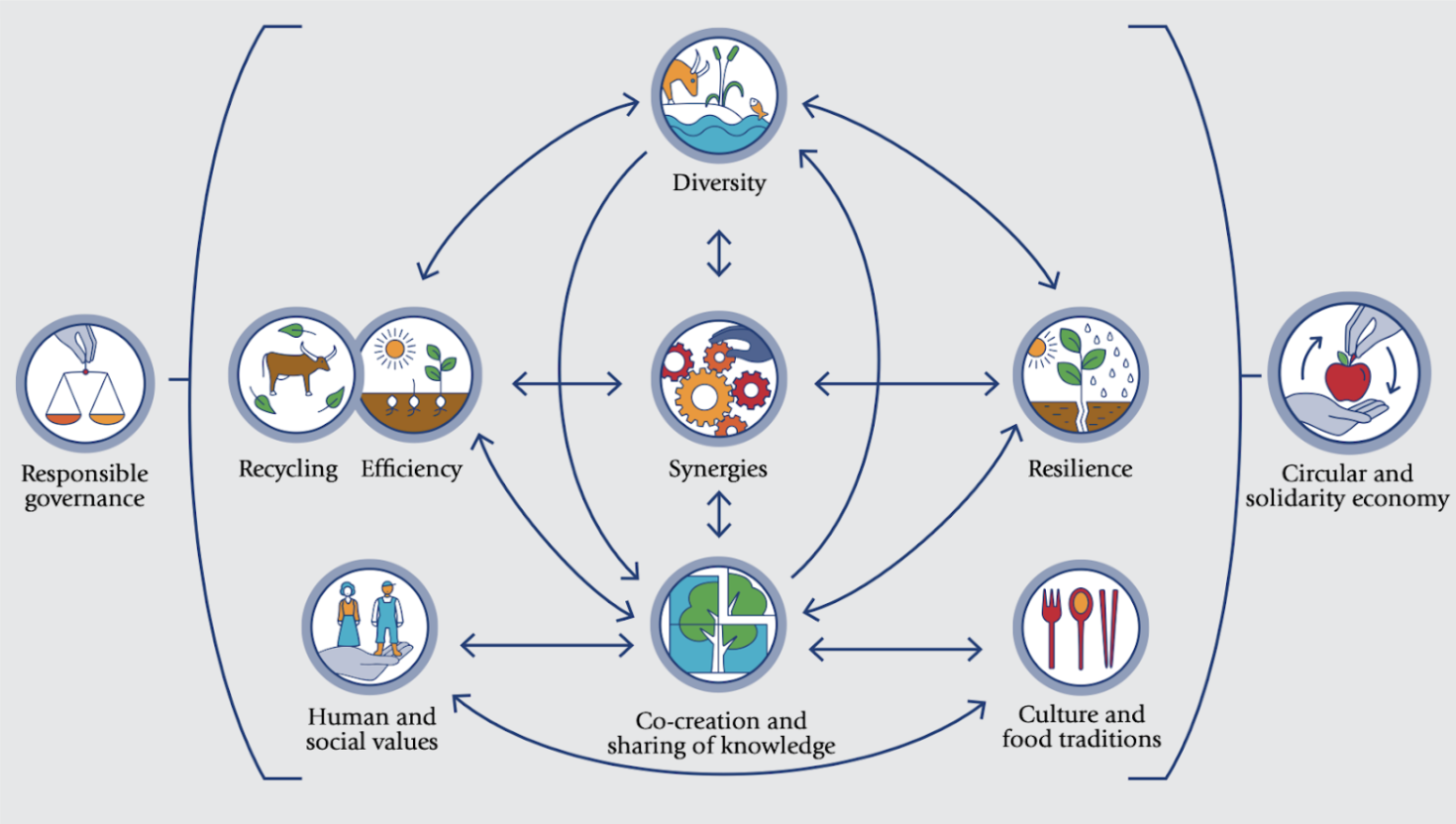
For a project to be considered agroecological, it should be:[6]This is according to the International Fund for Agricultural Development Agroecology Framework
The Scaling-up Agroecology Initiative is a UN-led platform that aims to support national agroecology processes through policy and technical capacity. The International Fund for Agricultural Development (IFAD) supports the initiative, and of the 207 IFAD-supported projects completed between 2018-2023, around 60% are implementing agroecological principles. The total investment in all IFAD projects in these years was USD 8.25 billion, though more financing was allocated to non-agroecological farming projects. Financing from the Adaptation for Smallholder Agriculture Programme (ASAP) and the Global Environment Facility (GEF) has been key in providing access to funds for agroecological practices – around 87% of projects with ASAP financing and 90% of projects with GEF financing entirely or partially promote agroecology. While the public sector is the primary financing source for both agroecological and non-agroecological IFAD, ASAP and GEF-supported projects, the private sector has played very little role in this financing, highlighting a key financing source to be developed.
IFAD is a UN-linked international financial institution focused on small-scale agriculture and supporting farmers through projects that provide small-scale farmers with access to finance, markets and technology, including via grants and low-interest loans. Together with finance and policy advisory organisation the Climate Policy Initiative (CPI), it released a report on the climate finance gap for small-scale farming. Climate finance is aimed at “reducing emissions and enhancing sinks of greenhouse gasses, and aims at reducing vulnerability and maintaining and increasing the resilience of human and ecological systems to negative climate change impacts”. The report found that 95% of climate finance for small-scale agriculture comes from the public sector, including from government donors, multilateral and bilateral development finance institutions (see the chart below).
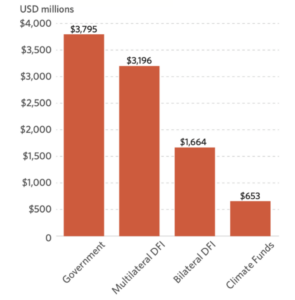
The financial instruments used by the public sector mostly include grants (50%), followed by concessional (low cost) debt (33%) and non-concessional debt (16%). Of these grants, the majority (80%) were provided by governments, while concessional debt was largely issued by multilateral and bilateral development finance institutions. Multilateral development banks also provided the majority of the non-concessional debt.
There are various impact-oriented funds aimed at small-scale agriculture, including:
Blended finance, which is “the strategic use of development finance and philanthropic funds to mobilise private capital flows to emerging and frontier markets”, is viewed as a finance solution for climate resilient and sustainable agriculture. Blended finance helps reduce both real and perceived risks in an investment, thereby facilitating private capital investment. Between 2014-2019, around 22% of blended finance transactions globally went to rural and smallholder farmers (see the chart below). The median transaction size for smallholder farmers during this period was USD 35 million, though the scale of these transactions has increased in recent years.
Blended finance is helping small-scale farmers through market initiatives such as Aceli Africa, which is supporting loans to agricultural small and medium sized enterprises in Africa. For instance, Aceli’s financial incentives helped Tanzania Commercial Bank provide loans for business to purchase cassava from smallholder farmers. Another example is the African Agricultural Capital Fund, which has made investments ranging from USD 250,000 to USD 2.5 million in small and medium sized agricultural businesses in Africa.
The Commission on Sustainable Agriculture Intensification (CoSAI) commissioned a report that found that around USD 60 billion was spent each year on agricultural innovation in the Global South between 2010-2019, of which 60%-70% came from national governments, 20%-25% from the private sector (mostly related to the research and development and marketing of new products related to mechanisation, crop protection, and seed development and biotechnology), and 10%-20% from development partners, including institutional investors, bilateral and multilateral agencies, and international philanthropies.[7]Examples of innovation funding in the report included research into new seed varieties, training on new agroforestry practices, the adoption of agricultural policies such as fertiliser subsidy … Continue reading Of this funding, less than 7% was directed at sustainable intensification specifically.
References
| ↑1 | Small-scale farmers are typically those that produce food on up to two hectares of land in Asia and Africa and up to 15 hectares in Latin America. Small-scale farmers may or may not hold land titles. |
|---|---|
| ↑2 | Conventional pesticides are expensive for these farmers, who often do not have access to adequate protective clothing. |
| ↑3 | Ecosystem services are the basic services that are provided by the natural environment that offer benefits to humans, such as pollination |
| ↑4 | Despite the lower yields, the economic profitability is around 22%-35% higher than conventional agriculture. |
| ↑5 | In certain regions, this could be viewed as an advantage, such as by promoting rural employment. |
| ↑6 | This is according to the International Fund for Agricultural Development Agroecology Framework |
| ↑7 | Examples of innovation funding in the report included research into new seed varieties, training on new agroforestry practices, the adoption of agricultural policies such as fertiliser subsidy reforms, digital marketplaces for agricultural sales and purchases, and the maintenance and management of research institutes or infrastructure, such as the modernisation of slaughterhouses. |

Developing stringent rules for the global carbon market under A6.4 could set a precedent for high standards and restore faith…

A handful of countries are setting up 'nature markets' for trading biodiversity offsets, but the concept could lead to greater…